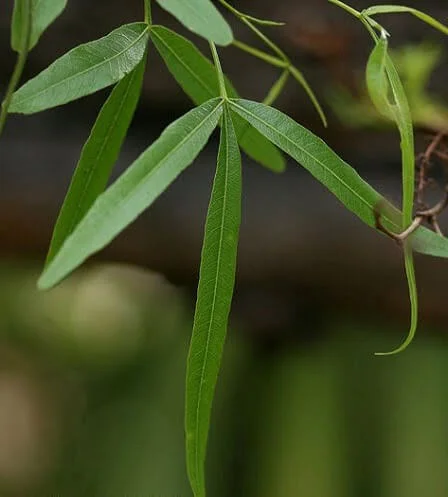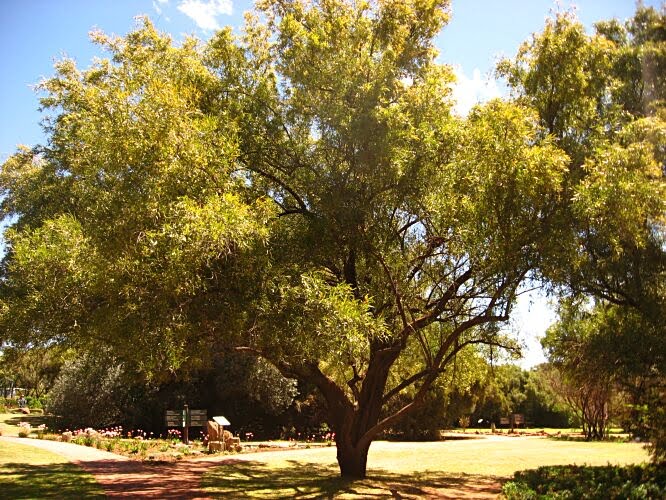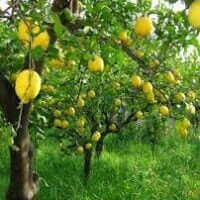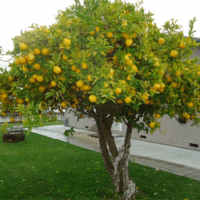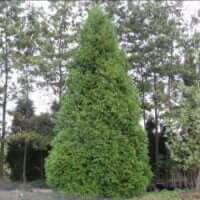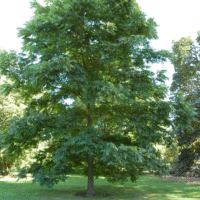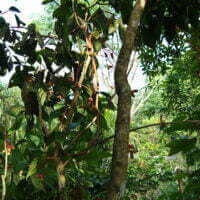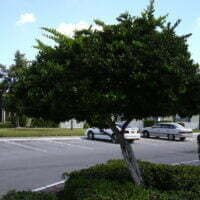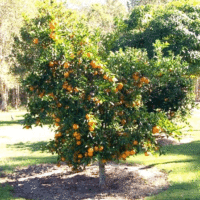| Botanical name | Searsia lancea |
|---|---|
| Plant Care |  Full Sun Full Sun – Prefers 6 or more hours of sun per day. Frost Hardy Frost Hardy – Can Handle frost without damage.  Low Watering Low Watering – Requires Little Water.  Low Maintenance Low Maintenance – Requires little maintenance.  Indigenous Indigenous – Originates in South Africa. |
| Size | |
| Categories | |
| Flowers | January February Tiny yellow green coloured flowers are produced in late summer. |
| Common name(s) | Karree Tree |
| Origin | |
| Foliage | Dark green coloured above and paler coloured beneath producing 3 lance shaped leaflets witch can sometimes be toothed. |
| Uses in landscape design | Works well as a skeleton tree, to add some shape to the garden and provides shade right through the year. |
| Drought tolerance | High |
| Fruit | This tree has glossy brown edible berry-like fruits with black seeds and a paper-like coating. |
| Soil conditions | Ph: 4,5,6,7Tolerates a variety of soil types |
| Growth rate | Moderately Fast |
| Uses | This tree is well known for its use as a street tree as well as in parking lots, estates and parks. |
| Wildlife attractions | birds |
| Interesting planting ideas | These trees create a nice forest effect if more than one are planted together. |
| Interesting info | Previously part of the Rhus genus, but now reclassified as Searsia. |
| Propagation | Easily grown from seed sown in a well drained medium. Mix 1part river sand 1part bark chips and a little bit of liming agent for a dynamite growing medium. |
| Possible problems | If not pruned correctly from young these trees may take on a unattractive shape as they age. |
| Other languages | Kareeboom (A) Inhlokoshiyane (Z) Umhlakotshane (X) Mokalabata (NS) |
Searsia lancea (Karree Tree)
- Botanical name: Searsia lancea
- Common name(s): Karree Tree
- Categories: Trees
Plant description:
A lovely dense, dark green shade tree bearing small, brown-yellow edible berries in summer and autumn. It is drought tolerant and moderately fast growing. Previously part of the Rhus genus, but now reclassified as Searsia.
Family: –
Synonym: –
Botanical Pronunciation: SEER-zee-a lan-see-uh
Searsia lancea requirements and features
info on these icons
Moderate Maintenance
Requires moderate maintenance.
Prohibited Use Notice: No Data Scraping Allowed Except for Search Engine Indexing:
The content provided on PlantInfo.co.za is intended for personal, non-commercial use only. Unauthorized extraction, reproduction, or use of the data, including scraping, for any purpose other than search engine indexing is strictly prohibited. Violations of these terms may result in legal action. By accessing and using this website, you agree to comply with these conditions and acknowledge the legal restrictions on the use of our content.
January February Tiny yellow green coloured flowers are produced in late summer. 
Dark green coloured above and paler coloured beneath producing 3 lance shaped leaflets witch can sometimes be toothed.
